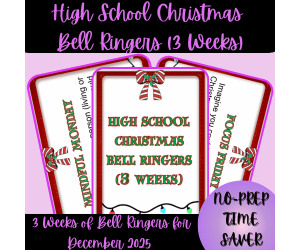2,784 products added recently
Character Outline Template
The Character Outline Template is a valuable resource for studying characters in literary works. This template guides students in examining a character's traits, motivations, relationships, and evolution throughout the story. By using the Character Outline Template, students gain deeper insights into character arcs and themes. It enhances critical thinking and discussion in literature classes. Employ this template to enrich your students' understanding of character analysis.
Character Profile Template Activity
ELA, Writing, Creative Writing, Grade 4, 5, 6, 7, 8, 9, 10, 11, 12, Templates, Teacher Tools
Activity Introduction An amazing activity designed for the students to learn more about languages. Character Profile Template Do you enjoy learning English? Which topic do you like the most Grammar, writing, reading, spelling, comprehension, vocabulary or phonics? Have you ever tried to learn any other language? If yes, tell us more about it? How many languages are spoken in the world? What do you think the most interesting one? Can you say Hello in Spanish, French or even Japanese? You can give it a try! Can you name the countries that speaks Portuguese? How many countries speaks Dutch? What is the less spoken language in the whole world? Would you like to learn a new language someday? If yes, which language will you choose? Character Profile Template Activity The activity is perfect for encouraging the researching skills for the students, while learning more about world languages. Character Profile Template This friendly designed worksheet is suitable for students at school, homeschooling, and as a group activity. Instructions What does the character look like? Draw it. Character's name and job. List your character's traits. Character likes ... Character dislikes ... Character is afraid of ... Format Available in a PDF format.
Author Educational Voice
Tags Character Profile Template Activity, Character Profile Template, Character Profile, Character, Characters, Creative Writing, Creative Writing For Kids, Creative Writing Activity
High School Christmas Bell Ringers (3 Weeks)
ELA, Writing, Holiday & Seasonal, Holidays, Christmas, Research, Resources for Teachers, High School, Homeschool Resources, Teacher Tools, Assessments, Presentations, Templates, Worksheets & Printables, Writing Prompts
As a fellow homeschool mom, I know how essential it is to find engaging activities that keep high schoolers thinking critically—especially during the festive, often distracting, weeks leading up to Christmas. That is why I created the High School Christmas Bell Ringers (3 Weeks) . This comprehensive set of discussion and writing prompts are designed to spark meaningful conversation, promote reflection, and ensure your high school students/homeschoolers start class with a thoughtful, focused activity. These High School Christmas Bell Ringers (3 Weeks) transition students/homeschoolers seamlessly into the day's lesson by encouraging deep dives into themes of gratitude, tradition, community, and personal growth, all through a Christmas lens. INCLUDED IN THIS RESOURCE Complete PowerPoint presentation for projecting. Separate, ready-to-use digital or printable file for student/homeschooler answers. Three weeks (15) of prompts that are unique, high-level daily questions. Consistent daily theme: Mindful Monday through Focus Friday structure. TOPICS COVERED Past memories, reflections, and identity-shaping moments. Intangible gifts and societal lessons. Time travel and no-technology Christmas. Advice to future self and creating traditions. These High School Christmas Bell Ringers (3 Weeks) resource is your complete, ready-to-go solution for the three weeks leading up to the holiday break. It saves you precious prep time by providing polished, engaging slides that you can use instantly, either digitally or printed. This resource empowers you to foster a sense of community and connection during a busy time of year by giving your high schoolers/homeschoolers a platform to express their personal thoughts and values. It is a purposeful, festive tool created by a dedicated educator to help other educators and parents keep their students/homeschoolers mentally sharp, reflective, and excited about learning, right up until the last bell rings for break. If you and your students/homeschoolers enjoyed this resource, please leave a review. Thank you for your support! Tina - Big Easy Homeschooling Mom
Author Homeschool with Big Easy Homeschooling Mom
Rating
Tags High School December Warm-ups, Homeschool Daily Prompts, Christmas Bell Ringers High School, Homeschool Christmas Journal, Pre-routine Holiday High School, Christmas Writing For Teens, December Classroom/homeschool Discussions, December Slide Decks, Holiday Bell Work, Character Education Activities



